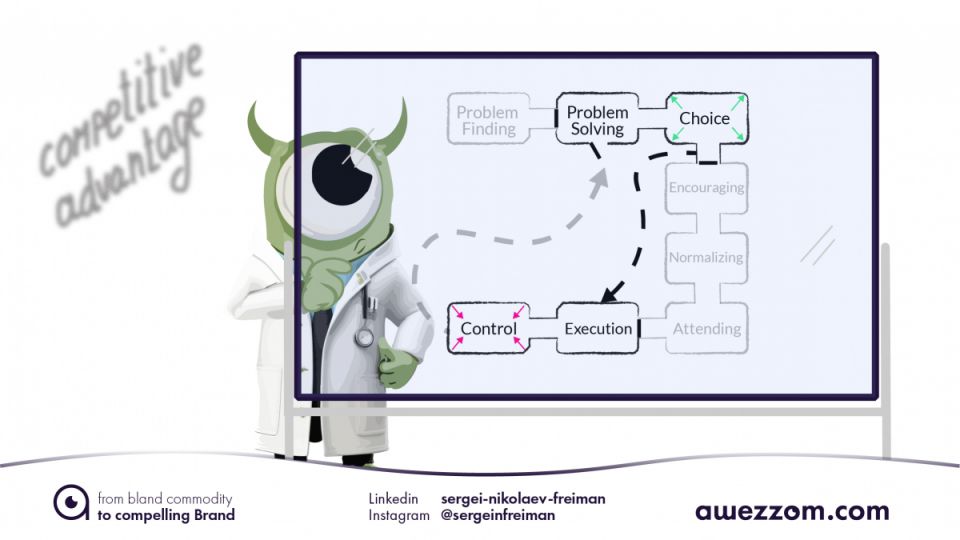Since my presentation at the ALA’s 2025 Conference in Nashville, TN on May 19, I had an opportunity to reflect on some of the ideas communicated to attendees. The topic of my presentation was on additional value creation and capture through service offering design (SOD). Together with the audience, we were primarily exploring the concepts of Value, namely five categories of perceived value; apart from deliverables. Many of the ideas were novel. And it was immensely rewarding to find many audience members receptive of these ideas.
One of the value categories we’ve explored were the so-called Value Activities (VA). Figure 1 exhibits the slide from my presentation. These VAs fall under the broader group of Process. It isn’t only the Deliverables nor Outcomes that clients find valuable. Value components (categories) that fall under the Process rubric are perceived as valuable as well. Apart from VAs, there are two other categories here: experiencing and goal facilitators.
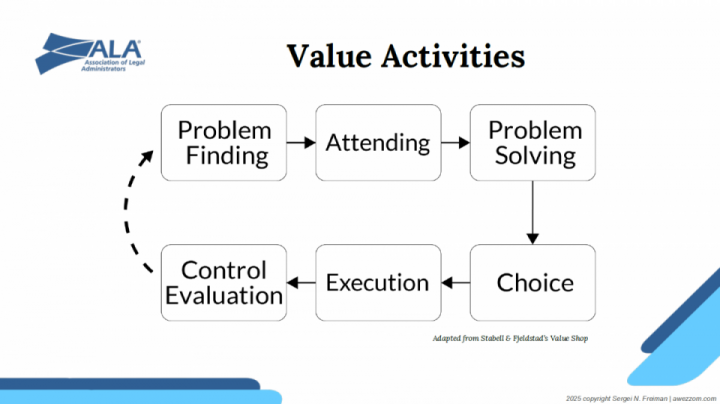
In this article, I would like to focus on Value Activities because there are important additions to this topic that I haven’t communicated to the group. At the time, I was still trying to figure these out. As I said during my presentation, the brightest minds (and I’m sure I ain’t one of ’em) haven’t figured out Value completely. So, whenever you see or hear me talk about Value, know that I’m still in the process of figuring it out.
Eight Value Activities
The original idea behind VAs comes from the work of Stabell & Fjelstad. Their Value Shop breaks value creation process into five primary activities: (8) problem-finding and acquisition, (7) problem-solving, (6) choice, (2) execution, and (1) control and evaluation (Stabell and Fjeldstad, 1998). My observations and analysis lead me to identify (3) Attending as a sixth primary activity as well. Recently, I am becoming increasingly convinced of two additional distinct VAs, namely (5) Encouraging and (4) Normalizing (not sure the labels are appropriate).

The first five VAs (octants 8, 7, 6, 2, and 1) are well-known and accepted, so I will explain the other three. Please note, that I have mapped these on a three-dimensional map (see Figure 2) for a reason. And the numbering of these VAs isn’t arbitrary as well. Also, these activities normally unfold in descending order from octant 8 to octant 1, one by one. However, loops, shortcuts, and starting point alterations are possible too.
Attending (octant 3) is the kind of activity you can experience during a visit to a psychotherapist or being cared by a nurse after surgery. A psychotherapist’s session may unfold in a manner where the professional does nothing but listens to the client talk. That’s it. No problem-solving, no choice exploration, no control and evaluation — just attending, being there. And that is of value to the client. Similarly, a nurse can stay by the patient’s side and talk to reduce anxiety. (Obviously, there is some Control (octant 1) VA involved in this latter scenarios as well.)
In a professional services setting, Attending (3) VA can be provided (for a fee) to clients (e.g.) who seek presence of a valuable resource. Your client may invite your professional (or you can offer to be invited) to attend their strategic meeting(s) and pay you for being there. Your professional (you) won’t speak unless spoken to, but you will be there should they need you. You could charge a flat fee or by the hour — probably the best options here. The latter one may go against the principles espoused by the zealous proponents of billable hour ditching. However, in my opinion it’s a strategic mistake to reject such an opportunity simply because of your personal distaste for a certain pricing structure.
Encouraging (octant 5) VA — that’s what many consultants and coaches do — help you find courage to take action on a decision already made. How you frame this to sell to your clients in a non-nonsensical down-to-earth way, is a question to ponder. At the root of this VA rests the need for Mastery which implies transfer of skills that will (can) boost confidence. The point of this activity is to provide evidence, or rather for clients themselves to discover evidence, that they can do it — whatever goals they’ve set for themselves are actually attainable. Of course, this value activity could also reveal the opposite which in such a case is likely to trigger goal reformulation.
For example, you could tell your client, “Madam, you’ve already made your choice to proceed with option C, and you approached us fully aware about options A, B, D, E, and F. We will assume and agree that you have already explored the consequences, trade-offs, and pros and cons of all those other options.
At the moment, it seems you hesitate to take action. Because we also believe that this is a great option for you, let us start with chamber 5 first (Encouragement). Let’s kick off with (e.g.) a standard training program that will allow your team members develop necessary new skills. This way you will experience for yourselves that this option is the right one for your firm (team). Should you fail, struggle or recognize this wasn’t the right choice for you, we can stop and get back to the drawing board of those A-F options.”
Normalizing (octant 4) VA is about helping clients to stay on the straight and narrow. To provide value here, you’d offer this VA to a client who positively responds to adherence to norms, regulations, standards and rules. Your job here is to help the client set boundaries for themselves and/or recognize boundaries that are imposed externally, and further assist with staying the course and holding oneself accountable for deviation. This VA can be illustrated (e.g.) by activities that outline, remind, and ensure following through with critical rules, standards and regulations. Or such a VA can be designed around methods and procedures that will keep the client from veering away from a preapproved strategy while staying within the organization’s cultural norms and values.
Here is one example of such a VA. When a professional firm is looking into brand extension opportunities, be it through a new service line, hiring new partners laterally to enter new geographic markets, appearing as sponsors or endorsers, this VA may be formulated to assess adherence to brand guidelines, values, culture, norms, and common sense. Similarly, this can be applied to something as seemingly trivial as adding a brand mark to (e.g.) wine bottles. The point of such an activity would be to prevent dilution of the brand, hedging against brain-dead stupidity. For example, sending a Thank you basket with a branded bottle of wine to your clients at the AA might be a not-so-prudent idea despite your marketing genius.
You might say this is common sense stuff and no vendor will act in a manner that can potentially dampen your reputation. But I wouldn’t be so sure if I were you. Some vendors do the bare minimum (often in response to your procurement folks squeezing them real hard) and won’t lift a finger to assess the consequences of your decisions. “You wanted branded wine bottles delivered? You got ’em (with a hefty discount). Us — we weren’t paid to think, we were paid to do. If you seek the brain-dead idiots to blame, here is a mirror. Free of charge.”
Chambers of Value Activities
The Value Activities are numbered and assigned to particular octants (see Fig.2). You can think of them as interconnected chambers. In an ideal world of professional services, — so it may seem — any client would always start with chamber 8 (Problem-finding) and proceed entering the remaining chambers sequentially, one by one, from highest digit to lowest. However, in many cases this doesn’t make a lot of sense.
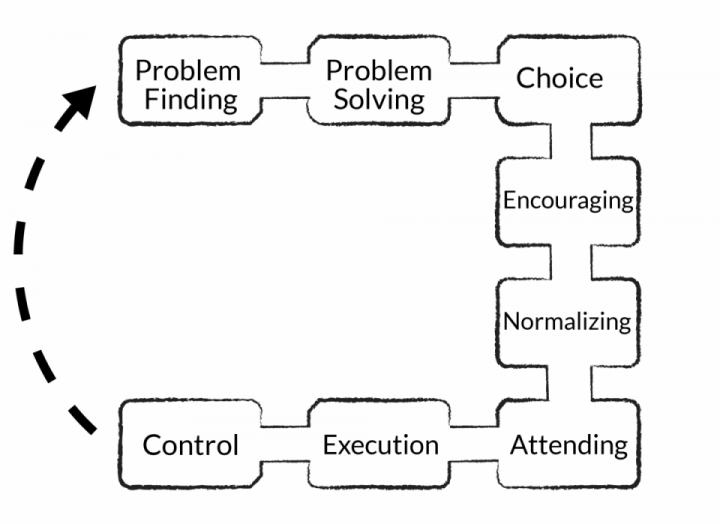
Consider, a frequent B2B buyer who is well-versed in purchasing particular services. They’d often buy capacity more than anything else, hence Execution (octant 2) VA and that’s it. When clients themselves have the ability to secure the other-octant VAs internally, why would they pay anyone for that which they can do themselves? It may also be the case that a problem (objective) at hand doesn’t suggest (e.g.) Choice (octant 6) VA.
So, when your client either has access to a similar chamber elsewhere, or they are certain that entering a particular chamber right now is completely unnecessary, if — after a wedding ceremony — you force them into the chamber because “That’s how we do things around here,” don’t expect your client to squeal with delight, “OMG, how excited I am to receive (and pay the price for) a VA I believe is absolutely worthless to me.” If they don’t think you’re creating value, client satisfaction will go down.
I’d venture to suggest, that’s probably not the best way to start a relationship anyway. For obvious reasons, you should let them know in advance how you do things around here, in your Chamber of Secrets. If that isn’t how they envision an ideal relationship, you shouldn’t be flabbergasted when they decline your alluring marriage proposal. You shouldn’t accept their way of doing things either.
I explained the idea in detail during the aforementioned presentation and wrote about this: Your services are your clients’ strategy. If the two don’t align, you have to change your services, or change their strategy, or walk away from romancing.
It is up to you to decide who will have the decision-making power over which chambers to keep open, in what sequence they should be (re)entered, and how big or small those chambers ought to be. However, whoever makes those decisions, effectively formulates your firm’s business strategy. It can be you. It can be them. Or it can be a tango.

The idea of chambers (rooms and doors, not VAs) comes from this post by David C. Baker — a consultant to creative shops and digital agencies. As you can tell from the Figure 3 image shamelessly published without the author’s explicit permission, Mr. Baker calls for closing the front door to the Execution room and opening a side door that’s connected to the Strategy room. In other words, to be able to charge a lot more for your (creative) services, clients must enter the Strategy room first. In time, you should be making this room bigger by sliding the dividing wall between the two rooms to the right.
There are very serious implications of such an approach that I’d like to point out further.
Creating Competitive Advantage
Competitive advantage is quite a straightforward proposition: consistently provide more (better, different) value across various contexts to your clients than your (direct) competitors, and Bob’s your uncle. VAs are perceived as valuable by buyers — not by all buyer types equally, but in principle. Hence, VAs can contribute to the attainment of competitive advantage. Here are several ways how VAs can contribute to creating one.
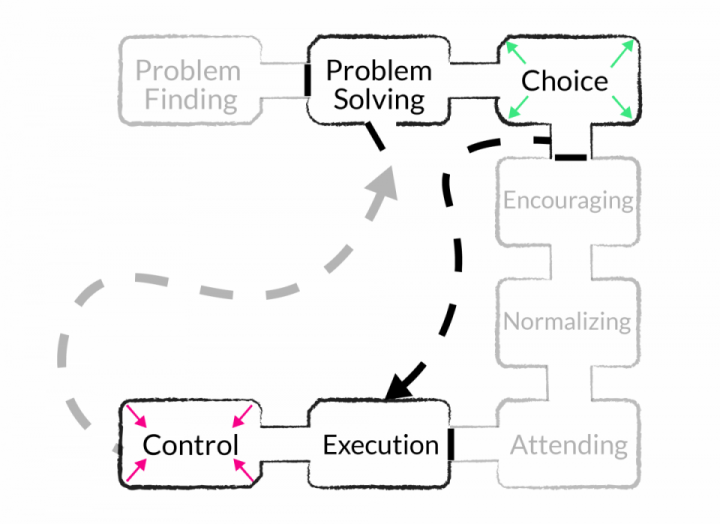
First, you can define a starting point and decide which VAs to include and remove, which ones to amplify and which ones to reduce. In other words, which chambers to shut, to enlarge, or to shrink.
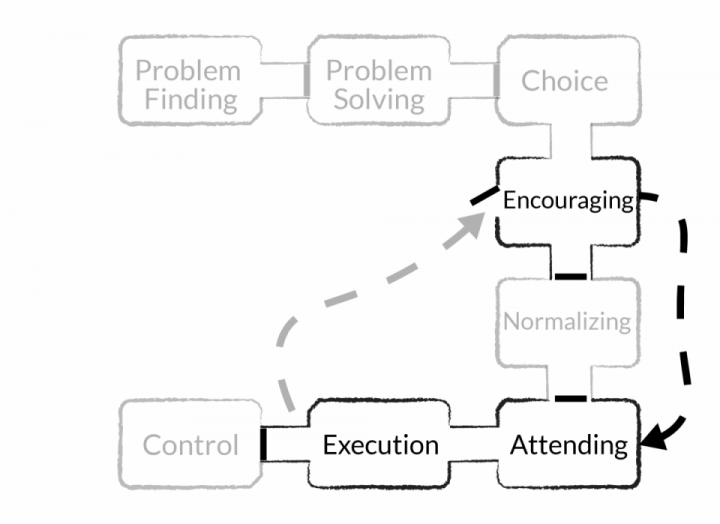
Second, you can decide on the sequence of those VAs. For example, you can provide a service offering (SO) following chambers 8 through 1 without skipping any VA. Or you can sequence a service to unfold this way: 8 → 7 → 6 → 2 → 1; which suggests that unless we identify the problem first, we do not problem-solve or do anything else. Or this way: 5 → 3 → 2 (see image above). In the latter example, you’d reject prospects who refuse to go through (e.g.) training because you know for a fact that without it refunds are inevitable.

Third, you can either completely disallow clients to change chamber-entering sequence in your process, or you can decide to be super-flexible about this. You can also inform the client (and put it into contract) that loops may be required because of their decision not to go through (e.g.) chambers 8 and 7. For example, “We may have to loop 6 → 2 → 1 (and you will agree to pay for it) until Control (1) VA shows we’ve made the right Choice.”

Fourth, for those clients that wish to skip (e.g.) chambers 8 and 7 going straight from 6 → 2 , you can deliberately create an SO variant alternative to a standard 8 → 7 → 6 → 2 → 1 sequence. In such a case, you will prevent clients from entering chamber 1. For example, “Dear Client, we will explore pros and cons of two options with you in Choice (6) VA. Together, we will select the one you feel is best, and go straight to Execution. Because without a more thorough exploration of the problem and ensuing choices it is quite impossible to assess the quality of the results, our Control (1) VA will only gauge a fact of deliverable rather than outcomes. Is this to your satisfaction?”
There are numerous ways you can approach this sequencing and thus create a differentiated offering. Again, this is part of your business strategy. Therefore, immensely important.
Examining each VA, it may look as if there is a clear distinction between Generalists’ VAs and Specialists’. And in broad strokes you will be correct: Generalists will naturally prefer octants 1 through 4, while Specialists will gravitate toward octants 5 through 8. However, the whole point of competitive advantage isn’t about following your personal preferences but rather creating a differentiated value. If the two coincide — perfect. But if you aim at creating a sustainable business, at some point you’d have to start taking both your clients’ and (!) your professionals’ value perceptions into account.
Unless of course you run a mammoth of a firm dictating the rules of the game in the market. Or you’re a f..king rock star and (today) everyone wants you. In both cases, it’s only a handful of firms that can occupy such positions.
The idea of always starting with the Strategy room has its merits. It may be a great fit for some professional firms. Perhaps, disproportionately so for creative shops. Adopting this approach, however, you must recognize and accept the following consequences.
First, there are eight generic buyer types. Not all of them perceive value similarly. Some buyers just don’t care about your strategic genius. Whatever clients you already have, they might not be that strategy-hungry. You have to check in on them because you need to keep the lights on. You also probably don’t have immediate access to all buyer types to pump into your lead gen machine either. So, don’t get hasty with locking the door and throwing away the key to the Execution room. There might be fewer prospects eager to use another entrance than you might expect.
Second, your talent pool is limited too. The smaller your firm, the less chess pieces you have. It may be the case that you currently don’t employ people who are naturally great at strategy work. Training and coaching them requires time, effort and money.
Third, because it will be improbable to successfully teach (some) old dogs new tricks, some of the Execution room’s professionals will have to be let go once you start moving the dividing wall. You’ll have to figure out what this will mean for your firm, culture, growth plans, etc.
Not everyone is a (good) strategist. To assess professionals’ natural proclivities, strengths and talents, I use a combination of the following tools: Big 5 (OCEAN), DiSC, and CliftonStrenths. There are other reliable instruments such as Understand Myself, Hogan Assessments, Predictive Index, and Caliper to help you triangulate assessment of strategic capabilities of individuals.
(A sidenote here: please beware of using tools that aren’t validated scientifically. There’s a myriad of those around — convenient, yes, but possibly inaccurate or simply hallucinatory, thus potentially harmful to your organization.)
To gain competitive advantage, it isn’t enough to offer strategy work to your clients. You have to do this work exceptionally well. Consistently, too. And this requires either a great deal of experience and processes in place, or natural affinity combined with talent and perceptual frames that intrinsically drive folks to get better at this; preferably all of the above.
One could package anything as strategic whatever but that doesn’t mean you’re going to be good at such work. If you aren’t, and strategizing isn’t your thing anyways, perhaps you could excel (and build a reputation) at doing terrific job with Attending (3) and Normalizing (4) VAs. By the way, the same aforementioned consequences will apply no matter which VAs you’ll decide to focus on.
Bottom line: you mustn’t always start with the Strategy room (typically, chambers 8 & 7) to attain competitive advantage. And let’s be crystal clear, it is the competitive advantage that drives the probability of making lots of many, not strategy work per se.
A final note. You can assess your direct competitors’ offerings to understand which VAs they aren’t providing (missing chambers/octants) or focusing on (chamber/octant size). You can interview and survey your best-fit clients (not quite the same thing as your typical A-tier clients) to gauge which VAs matter to them. You can also talk to your professionals to understand which VAs they are excited about most. All of that will inform you which VAs are likely to generate a competitive advantage for your firm.
Feel free to reach out if you’d like me to give a presentation on the topic of value creation at your next business strategy meeting. I’m based in NYC.
References
Stabell, C.B. & Fjeldstad, Ø.D. (1998). Configuring value for competitive advantage: on chains, shops, and networks. Strategic Management Journal, Vol.19, pp. 413–437.
The awezzom question of the day:
Which Value Activities are likely to create competitive advantage for us?
